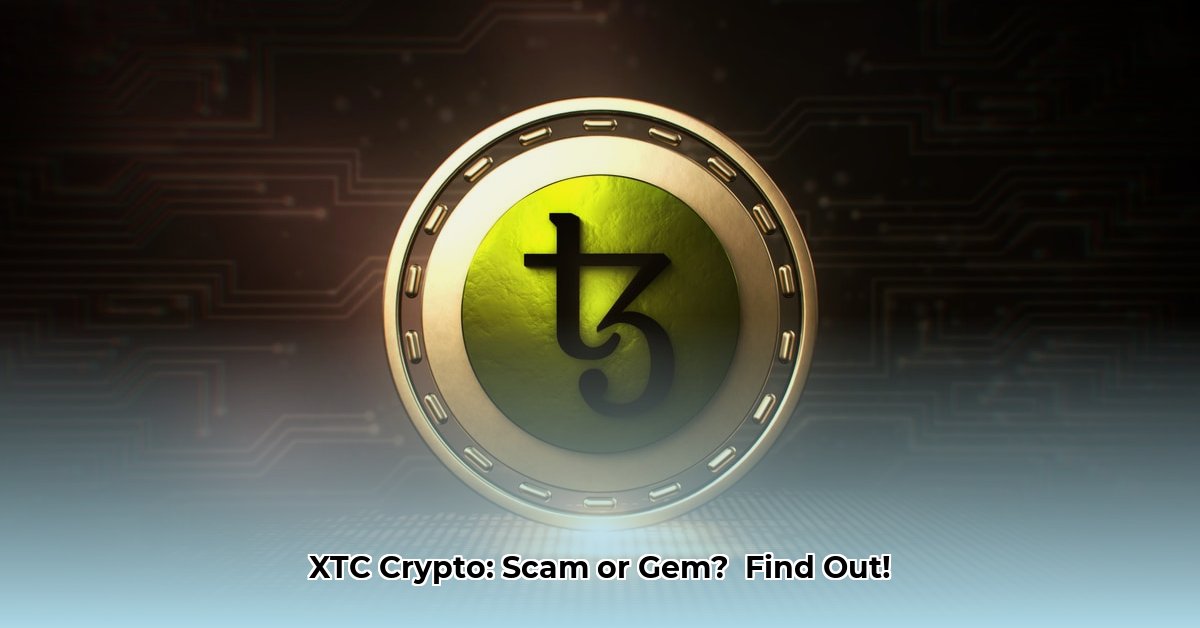
XTC Crypto: A Critical Assessment
Are you considering investing in TileCoin (XTC)? This cryptocurrency aims to disrupt online gambling and exchanges, but navigating this space requires careful consideration. This review offers a balanced, data-driven assessment of XTC, highlighting both potential benefits and significant concerns. The lack of transparency presents a substantial barrier to a comprehensive evaluation.
Transparency Concerns: A Major Red Flag
A critical deficiency in the XTC ecosystem is the absence of a comprehensive whitepaper (a document detailing the project's technology, goals, and operational details). This lack of transparency raises significant concerns regarding the project's legitimacy and viability. Without a clear understanding of the underlying mechanisms, assessing the XTC's security, scalability, and long-term sustainability proves extremely difficult. The total supply of XTC tokens is reported as 100 million, however, the circulating supply remains unclear. This critical information gap hinders accurate market valuation and risk assessment.
Risk Assessment Matrix: Navigating the Uncertainties
Given the considerable information gaps, a comprehensive risk assessment is crucial for potential investors. The following matrix summarizes key risks and potential mitigation strategies:
| Risk Factor | Likelihood | Severity | Mitigation Strategies |
|---|---|---|---|
| Regulatory Uncertainty | High | Very High | Stay informed on evolving legal frameworks; seek expert legal counsel. |
| Information Asymmetry | High | High | Demand complete transparency; conduct independent analysis; seek verifiable evidence from multiple sources. |
| Technological Vulnerabilities | Moderate | Moderate | Seek independent security audits (if available); analyze code transparency and community contributions |
| Market Volatility | Moderate | Moderate | Diversify investments; avoid over-exposure to a single asset. |
| Unknown Team Background | High | High | Thoroughly research the team behind XTC; exercise appropriate skepticism. |
Legal Landscape: Navigating the Intersection of Crypto and Gambling
The intersection of cryptocurrency and online gambling presents a complex legal landscape. XTC operates in this space, requiring careful navigation of KYC/AML regulations and data privacy laws, which vary significantly across jurisdictions. Non-compliance could lead to severe penalties and legal repercussions.
Actionable Steps: A Cautious Approach
Given the current lack of information and the inherent risks, we recommend a cautious approach:
Demand Transparency: Before investing, demand full transparency from the XTC team, including a comprehensive whitepaper, clear tokenomics, and demonstrable proof of decentralization.
Conduct Independent Verification: Don't rely solely on marketing materials. Seek independent verification of claims from reputable third-party sources.
Diversify Investments: Never invest more than you can afford to lose. Diversification is crucial to mitigate risks.
Seek Expert Advice: Consult with financial and legal professionals before making any investment decisions, considering the complexity and lack of precedents in this space.
Evaluating TileCoin's Decentralization Claims
The claim of decentralization is central to XTC’s value proposition. However, this claim requires rigorous verification. Simply stating decentralization is insufficient; concrete evidence is necessary.
Verifying Decentralization: A Multifaceted Approach
Truly decentralized systems exhibit several key characteristics:
Node Distribution: Independently verify the geographical distribution of network nodes and look for any signs of concentration that could indicate centralized control.
Code Transparency: Assess the accessibility and openness of the source code for community scrutiny. Look for evidence of active community contributions.
Token Distribution: Evaluate the distribution of tokens to identify any potential concentration of power within a limited number of holders.
Assessing the Team and Community
Team Transparency: The team's identity and relevant experience should be publicly available and verifiable.
Community Engagement: A healthy open-source project displays actively engaged community participation. Limited participation could indicate other dynamics at play.
Governance Model: A truly decentralized project has a demonstrably transparent and community-driven governance mechanism.
Risk Assessment: Decentralization and Beyond
The risks associated with XTC's decentralization claims and the overall project merit careful evaluation:
| Risk Factor | Severity | Mitigation Strategies |
|---|---|---|
| Centralized Node Control | High | Independent verification of node distribution; analysis of network topology and participation |
| Lack of Code Transparency | High | Examination of source code for vulnerabilities; analysis of community contributions and engagement |
| Concentrated Token Holdings | High | Review of token distribution; looking for signs of control by a small number of entities |
| Ineffective Governance | Medium | Assessment of the project's described governance model and comparison against actual practices |
| Lack of Team Transparency | Medium | Independent research of team members; verification of credentials and experience |
| Community Inactivity | Low | Monitoring community participation over time; considering potentially limited network effect |
Conclusion: Proceed with Extreme Caution
The lack of transparency and significant information gaps surrounding TileCoin (XTC) present considerable challenges to a comprehensive assessment. Until sufficient information is provided, and independent verification is possible, potential investors should exercise extreme caution. The risk profile remains high, and a thorough due diligence process is paramount.